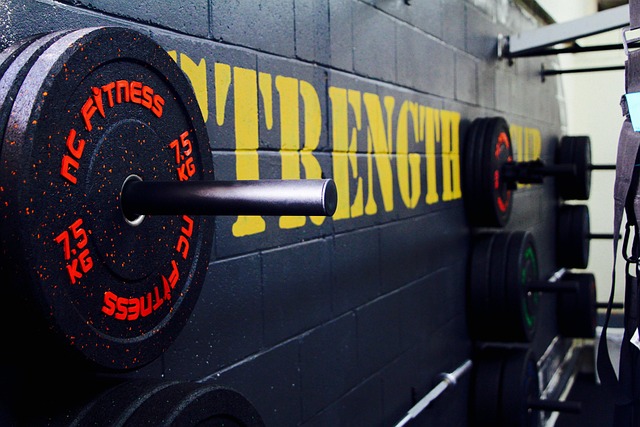In today’s fast-paced world, finding time to hit the gym can be a challenge. Between work commitments, family responsibilities, and other daily obligations, it’s easy to let fitness take a backseat. However, with the right mindset and tools, you can achieve your fitness goals without ever leaving your home. Effective home workout routines are not only convenient but also highly adaptable to different fitness levels and goals. Whether you’re a beginner or an experienced fitness enthusiast, this guide will walk you through how to design and execute a workout plan that works for you.
Why Choose Home Workouts?
Before diving into specific routines, it’s important to understand why home workouts have become so popular. The benefits are numerous:
- Convenience : No need to commute to the gym or stick to rigid schedules. You can exercise whenever suits you best.
- Cost-Effective : Save money on gym memberships, travel, and equipment by utilizing what you already have at home.
- Personalization : Tailor your workouts to fit your space, preferences, and fitness level.
- Privacy : Some people feel more comfortable exercising in their own environment, away from crowded gyms.
- Consistency : With fewer barriers to entry, sticking to a routine becomes easier.
Essential Components of an Effective Home Workout Routine
To maximize results, every home workout should incorporate key elements that target strength, endurance, flexibility, and cardiovascular health. Here’s how to structure your routine effectively:
1. Warm-Up (5-10 Minutes)
A proper warm-up prepares your body for physical activity, reduces the risk of injury, and boosts performance. Start with dynamic movements like:
- Jumping jacks
- Arm circles
- High knees
- Bodyweight squats
2. Strength Training (20-30 Minutes)
Building muscle and increasing strength is crucial for overall fitness. Since most people don’t have access to heavy weights at home, bodyweight exercises are an excellent alternative. Try these compound movements:
- Push-Ups : Targets chest, shoulders, triceps, and core.
- Squats : Strengthens legs, glutes, and lower back.
- Lunges : Improves balance while toning thighs and calves.
- Planks : Engages the entire core, including abs and obliques.
- Glute Bridges : Activates the posterior chain (hamstrings, glutes).
For added resistance, consider using household items like water bottles, backpacks filled with books, or resistance bands.
3. Cardiovascular Exercise (10-20 Minutes)
Cardio is essential for heart health and burning calories. High-Intensity Interval Training (HIIT) is particularly effective because it maximizes calorie burn in minimal time. Examples include:
- Burpees
- Mountain climbers
- Skater jumps
- Sprinting in place
If HIIT feels too intense, opt for steady-state cardio such as jogging in place, dancing, or following along with online aerobics videos.
4. Flexibility & Mobility (5-10 Minutes)
Stretching after your workout helps improve flexibility, reduce soreness, and prevent injuries. Focus on major muscle groups with stretches like:
- Hamstring stretch
- Quad stretch
- Child’s pose
- Cat-cow stretch
- Cobra pose
Yoga and Pilates are fantastic options if you want to dedicate more time to mobility work.
5. Cool Down (5 Minutes)
End your session with gentle movements and deep breathing to bring your heart rate down gradually. This could include walking in place or seated forward folds.
Sample Home Workout Plans
Here are two sample routines tailored for different fitness levels:
Beginner Routine
- Warm-Up: 5 minutes of marching in place + arm swings
- Circuit (Repeat 2 times):
- 10 bodyweight squats
- 5 push-ups (modified on knees if needed)
- 15-second plank hold
- 20 jumping jacks
- Cardio: 5 minutes of brisk walking in place
- Stretch: 5 minutes of static stretches
Intermediate/Advanced Routine
- Warm-Up: 10 minutes of dynamic stretches + high knees
- Circuit (Repeat 3 times):
- 15 jump squats
- 10 push-ups
- 20-second side plank (each side)
- 30 mountain climbers
- Cardio: 10-minute HIIT session (e.g., 30 seconds sprinting, 30 seconds rest)
- Stretch: 10 minutes of yoga poses (downward dog, pigeon pose, seated twist)
Tips for Success
- Set Clear Goals : Define what you want to achieve—whether it’s weight loss, muscle gain, improved endurance, or simply staying active.
- Create a Dedicated Space : Designate a corner of your home as your workout area. Keep it clutter-free and inspiring.
- Stick to a Schedule : Consistency is key. Aim to exercise at the same time each day to build a habit.
- Track Progress : Use a journal or app to log your workouts, noting improvements over time.
- Stay Motivated : Mix up your routines to avoid boredom. Follow fitness influencers or join virtual classes for variety.
- Prioritize Nutrition : A balanced diet complements your efforts. Fuel your body with lean proteins, whole grains, fruits, and vegetables.
Overcoming Common Challenges
Home workouts come with unique challenges, but they’re all surmountable:
- Lack of Equipment : Get creative with household items or invest in affordable tools like resistance bands or dumbbells.
- Distractions : Communicate boundaries with family members or roommates during your workout time.
- Motivation Slumps : Remind yourself why you started. Celebrate small victories along the way.
- Limited Space : Opt for exercises that require minimal room, such as planks or wall sits.
